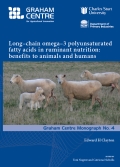Gulbali Institute
-
Home
-
Research
- Agricultural innovation
- Biosecurity
- Cultural connection and environmental stewardship
- Food and Beverage Innovation
-
Sustainable aquatic systems
-
Our Projects
- Fish highways to maintain fishing income and food sources in South East Asia
- Modernizing irrigated agriculture to protect and restore aquatic biodiversity and ecosystem services in SE Asia
- Murrumbidgee river and floodplains; supporting ecosystems and biodiversity
- Citizen Science - FIsh tagging and recovery
- Stocky galaxias captive breeding program
- Fisheries mitigation Xayaburi Dam, Lao PDR
- Fisheries monitoring in the Mekong
-
Our Projects
- News and events
- Partner with us
- Join the team
- Find experts
- About us
- Contact us

